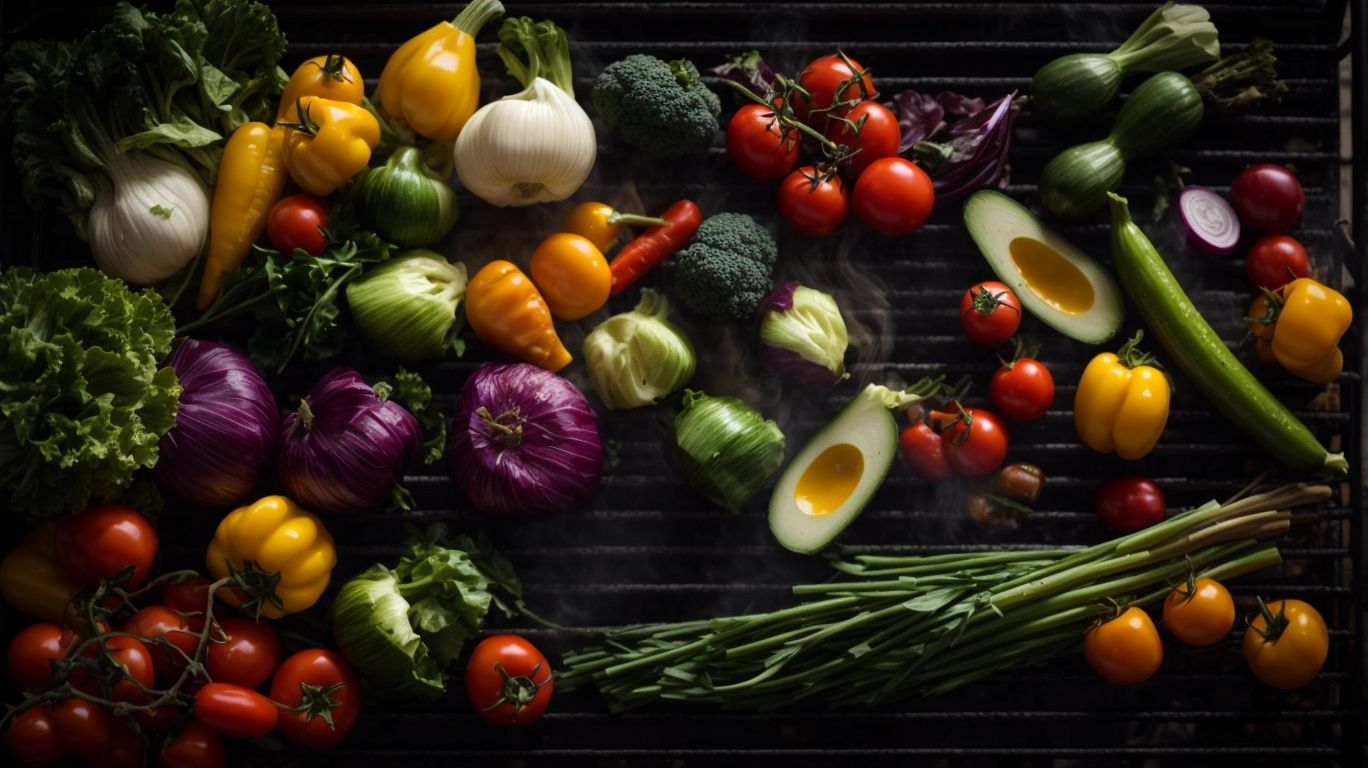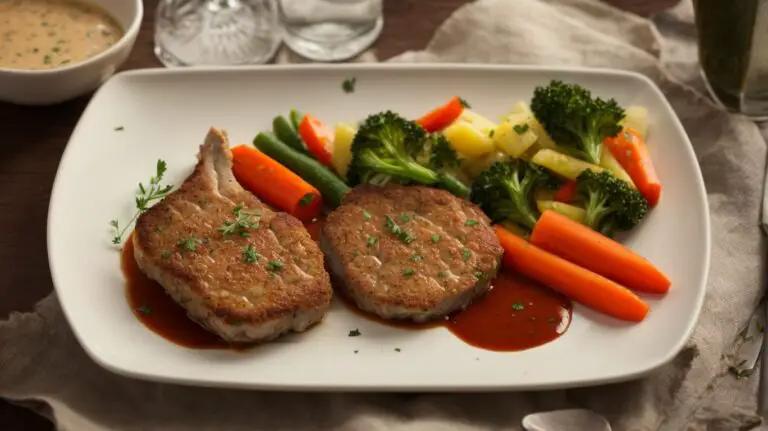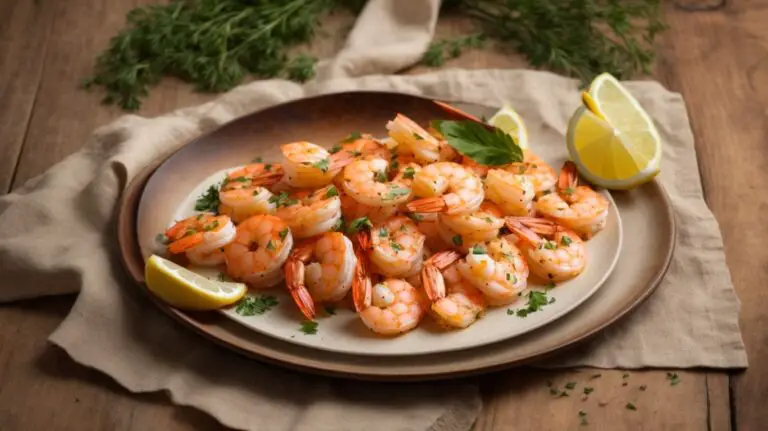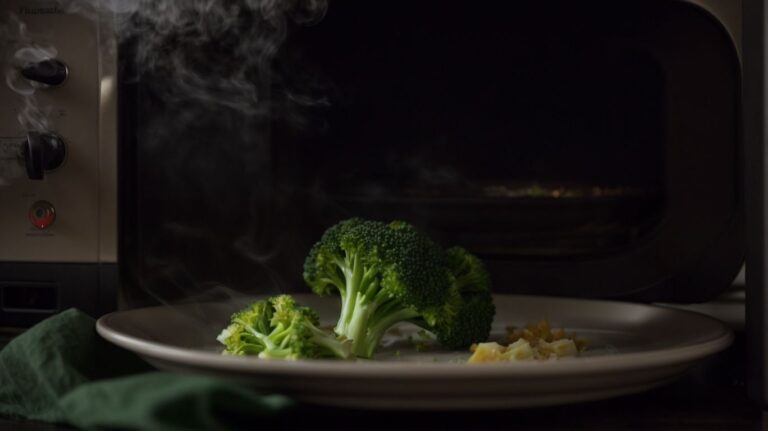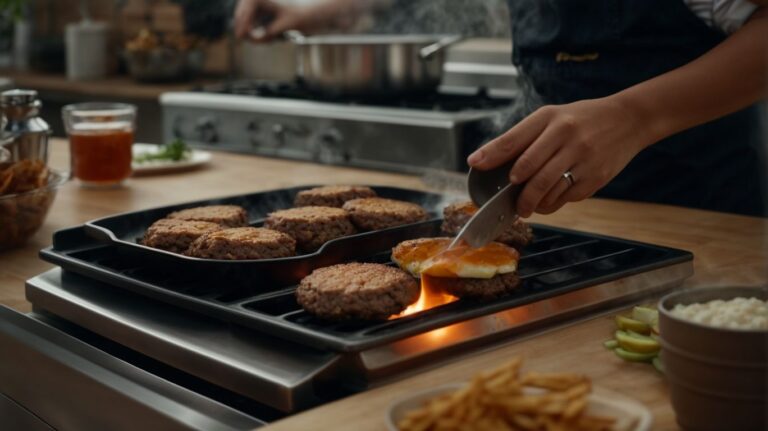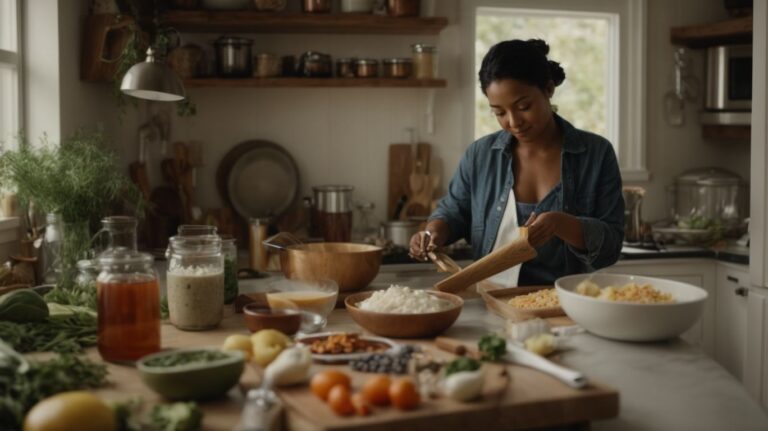How to Cook Vegetables on the Grill?
Looking to take your grilling game to the next level?
Grilling vegetables is a delicious and healthy way to add some variety to your BBQ menu.
We will explore the best vegetables for grilling, how to prepare them, different grilling techniques, and tips for achieving that perfect char.
Whether you’re a seasoned griller or a novice, get ready to elevate your veggie game and impress your friends and family at your next cookout!
Key Takeaways:
What Vegetables are Best for Grilling?
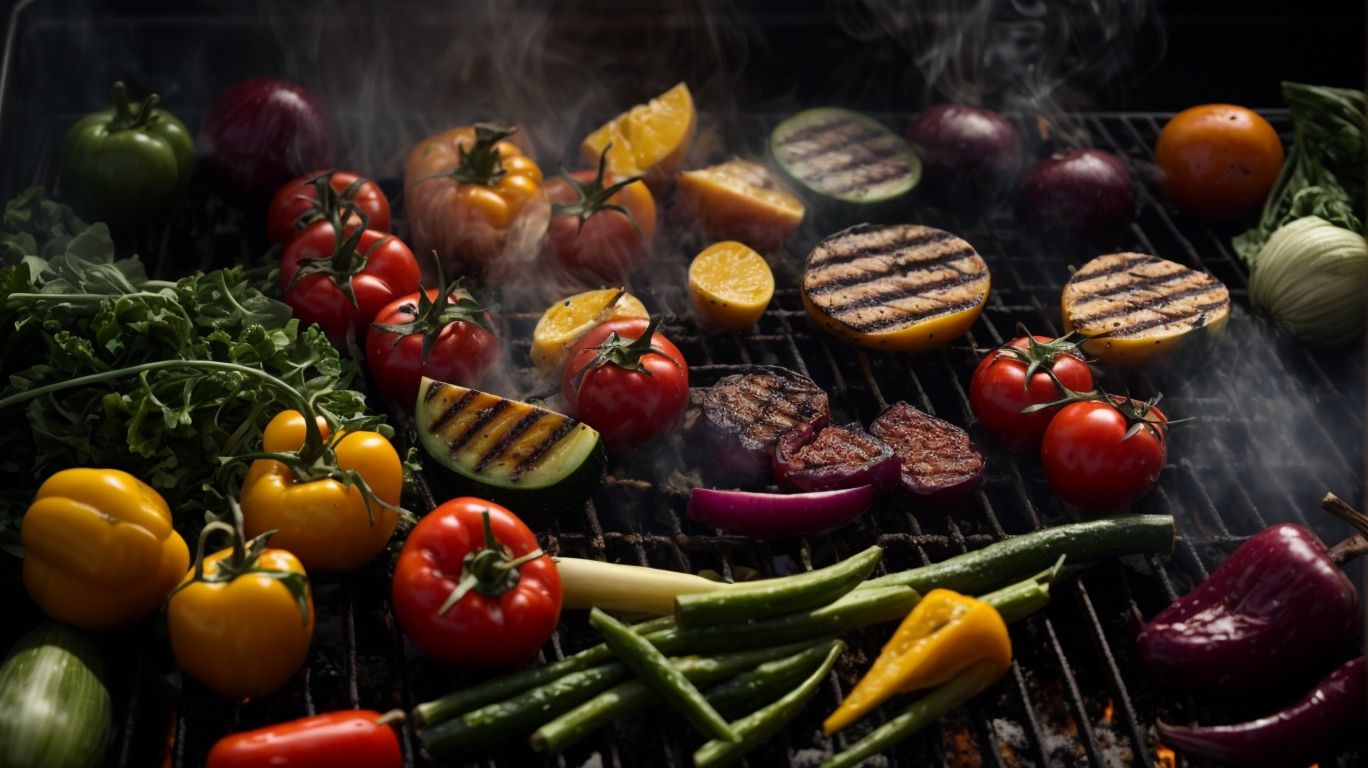
Credits: Poormet.Com – Arthur Perez
Grilling vegetables is a fantastic way to enhance their flavors and textures, providing a healthy and delicious option for any meal.
In terms of grilling vegetables, bell peppers are a popular choice due to their vibrant colors and sweet taste. Onions caramelize beautifully when grilled, adding a rich flavor to any dish. Zucchinis and squashes are perfect for grilling, as they become tender and develop a lovely charred exterior. Corn on the cob, brushed with butter and seasonings, can be a mouthwatering addition to any BBQ spread. Mushrooms are a versatile option, soaking up flavors from marinades and developing a meaty texture when grilled.
Firm Vegetables
Firm vegetables like bell peppers, onions, and corn are perfect for grilling as they hold their shape well and develop a delightful char when exposed to direct or indirect heat.
To prepare firm vegetables for grilling, start by washing and patting them dry to ensure they cook evenly. Cut the vegetables into uniform pieces to promote even cooking. When grilling, you can either create foil packs by wrapping the vegetables in aluminum foil with seasonings and a drizzle of oil or use a grill basket to keep them contained on the grill. Seasoning options can range from simple salt and pepper to complex spice blends that enhance the natural flavors of the vegetables. Pay attention to cooking times, as overcooked vegetables can become mushy. For added flavor, consider experimenting with different cooking methods like direct grilling for a charred taste or indirect grilling for a more gentle cook.
Starchy Vegetables
Starchy vegetables such as potatoes and brussels sprouts benefit from grilling, absorbing smoky flavors and developing crispy exteriors with beautiful grill marks.
When preparing these vegetables, it’s essential to cut them into uniform sizes to ensure even cooking. Drizzle them generously with olive oil and sprinkle with minced garlic, salt, and pepper to enhance their natural flavors. Let the veggies marinate for a few minutes to allow the seasonings to penetrate. Preheat the grill to medium-high heat and place the vegetables directly on the grates. Avoid overcrowding the grill to promote proper caramelization and grill marks.
Leafy Vegetables
Leafy vegetables like zucchini, squash, and mushrooms can be transformed into delectable grilled dishes when paired with fresh herbs, balsamic vinegar, and a sprinkle of salt and pepper.
These vegetables, when exposed to the heat of the grill, take on a whole new dimension of flavor, enhancing their natural sweetness and earthy undertones. Combining rosemary or thyme with a drizzle of balsamic vinegar creates a harmonious melody of tastes that tantalize the taste buds.
Experimenting with different seasoning techniques, such as marinating in a fragrant herb-infused oil or creating a zesty herb rub, can elevate the grilled veggies to a gourmet level.
Preparing Vegetables for Grilling
Before grilling, preparing vegetables involves essential steps such as washing, cutting, marinating, and seasoning to maximize their taste and tenderness on the grill.
Washing vegetables is crucial not only to remove dirt but also to ensure they are free from any pesticides or residues. When cutting, aim for uniform slices to promote even cooking and prevent some pieces from being undercooked while others are overdone. Marinating the vegetables in a mixture of crushed garlic, balsamic vinegar, and your favorite herbs enhances their flavors and adds depth. Seasoning with salt, pepper, and a touch of olive oil before grilling helps form a delicious caramelized crust.”
Washing and Drying
Washing and drying vegetables before grilling is crucial to remove impurities and ensure a clean base for seasoning and cooking.
In terms of proper washing, start by rinsing the vegetables under cold running water to remove any visible dirt or debris. Use a vegetable brush for items with tougher skin, like potatoes or carrots.
To preserve their flavors, it’s essential to avoid soaking the vegetables for too long, as this can lead to loss of water-soluble vitamins. Pat them dry with a clean kitchen towel or use a salad spinner to remove excess moisture, which can impact the grilling process and flavor absorption.
By taking time to wash and dry your vegetables properly, you set the stage for a delicious grilling experience with enhanced flavors.
Cutting and Slicing
Precise cutting and slicing of vegetables impact their surface area, affecting how they cook on the grill and absorb flavors during the grilling process.
When vegetables are cut uniformly, it ensures that they will cook evenly, preventing some pieces from being undercooked while others are overcooked. This consistency in cooking also enhances the overall presentation of the dish. By increasing the surface area of vegetables through precise cutting and slicing, you create more opportunities for them to caramelize and develop that irresistible charred flavor on the grill.
Marinating or Seasoning
Marinating or seasoning vegetables with olive oil, salt, and pepper enhances their natural flavors and prepares them for the grilling process, ensuring a delicious outcome.
When vegetables are marinated or seasoned before grilling, they not only absorb the flavors of the seasonings but also benefit from the texture-enhancing properties of olive oil. Olive oil helps to coat the vegetables, locking in moisture and preventing them from drying out on the grill. Salt and pepper play crucial roles in balancing the flavors of the vegetables, enhancing their taste and making them more enjoyable to eat. Other seasonings, such as herbs, spices, and garlic, can also be used to add depth and complexity to the grilled veggies.
Grilling Techniques for Vegetables
Mastering different grilling techniques such as direct heat, indirect heat, foil packs, grill baskets, and skewers can elevate the flavors and textures of various vegetables on the grill.
When grilling vegetables with direct heat, the food is placed directly over the heat source, resulting in beautiful char marks and a slightly crisp exterior while keeping the interior tender. On the other hand, utilizing indirect heat involves cooking vegetables away from the flames, allowing for slower and more gentle cooking, perfect for larger or more delicate vegetables that require longer cooking times.
For added convenience, consider using foil packs for vegetables that benefit from steaming while cooking. Simply wrap seasoned veggies in aluminum foil and place them on the grill for a flavorful and juicy result. Grill baskets are another handy tool, offering a way to cook smaller or more delicate vegetables without the risk of them falling through the grates.
Skewering vegetables not only enhances their visual appeal but also provides more control over the cooking process. By threading vegetables onto skewers, you can ensure even cooking and easily rotate them for balanced heat distribution. Whether you prefer the simplicity of foil packs, the convenience of grill baskets, or the presentation of skewers, experimenting with these methods will take your grilled vegetable game to the next level.
Direct Heat Grilling
Direct heat grilling imparts delicious grill marks and caramelization on vegetables, enhancing their visual appeal and introducing rich, smoky flavors.
When grilling vegetables over direct heat, it is essential to preheat the grill to achieve those perfect sear marks. Make sure the grates are clean and well-oiled to prevent sticking. Place the vegetables directly on the hot grates, spacing them evenly to allow for even cooking.
Remember to flip the vegetables occasionally to ensure uniform charring and caramelization on all sides. Be mindful of cooking times, as different veggies require varying durations to reach the ideal texture and flavor. To avoid overcooking, regularly check the tenderness of the vegetables as they grill.
By mastering these techniques, you can elevate your vegetable grilling game and create dishes that are not only delicious but also visually appealing.”
Indirect Heat Grilling
Indirect heat grilling ensures vegetables cook evenly, retaining moisture and tenderness while absorbing smoky flavors from the grill.
One of the key benefits of using this method is that vegetables are less likely to burn or dry out, allowing them to maintain their natural flavors and nutrients.
With indirect heat grilling, the vegetables are less prone to becoming mushy or losing their crunch, making it an ideal method for grilling delicate veggies such as asparagus, zucchini, or bell peppers.
Indirect heat grilling also offers a more gentle cooking process, helping vegetables to achieve a perfect balance of softness and slight char without being overly charred on the outside.
Skewering or Using a Grill Basket
Skewering vegetables or using a grill basket offers practical solutions for maximizing surface area exposure, promoting even cooking and flavor distribution on the grill.
In terms of grilling vegetables, ensuring they are cooked evenly is key to achieving that perfect char and tender bite. Skewering vegetables allows for direct heat contact, ensuring uniform cooking throughout. Alternatively, using a grill basket is ideal for smaller or more delicate vegetables, preventing them from falling through the grates.
Maximizing surface area contact through skewers or a basket not only aids in cooking efficiency but also enhances the overall flavor profile by allowing spices and marinades to permeate every inch of the vegetables.
How to Tell When Vegetables are Grilled to Perfection?
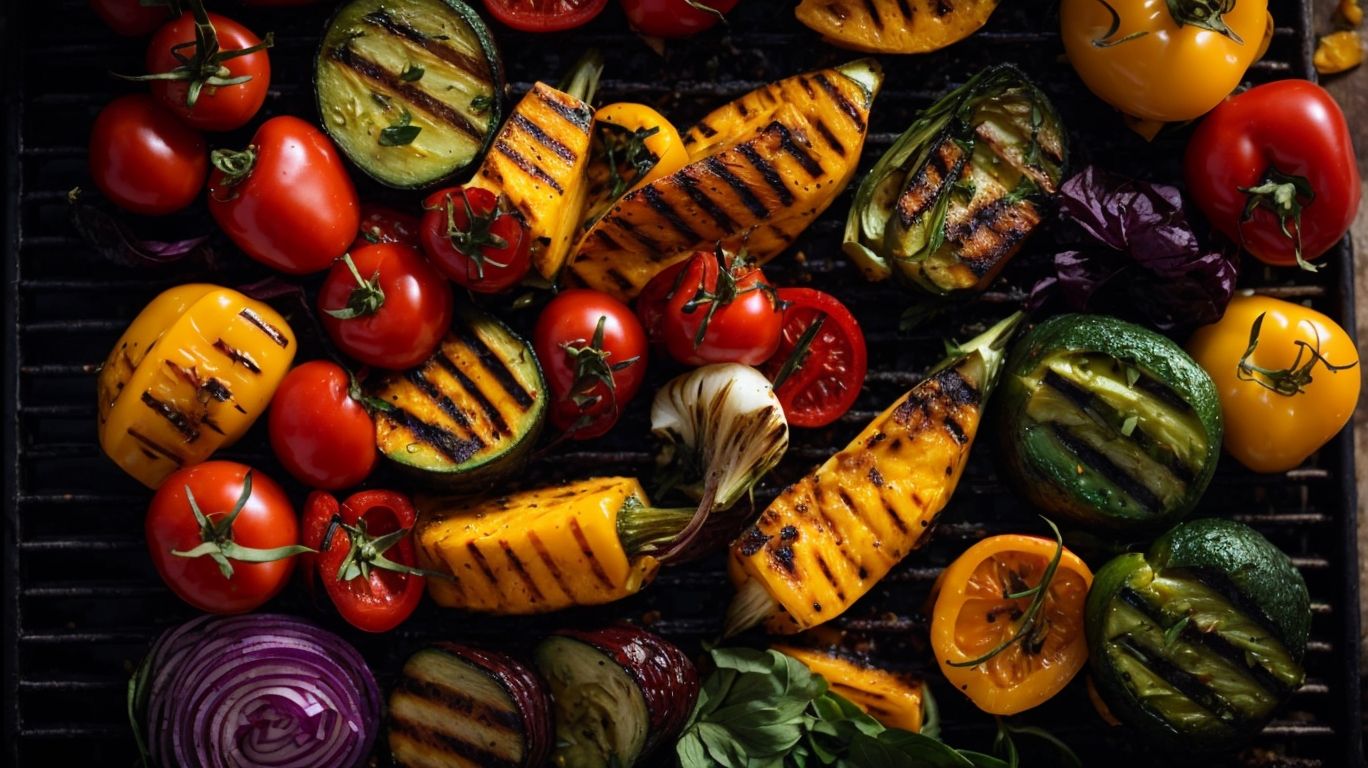
Credits: Poormet.Com – Douglas Green
Determining the perfection of grilled vegetables involves monitoring grill temperature, adjusting cooking times, and considering post-cooking seasoning to achieve optimal flavors.
When grilling vegetables, ensuring that the grill temperature is just right is crucial. This can prevent the vegetables from burning or being undercooked. Mastering the art of time management during grilling is key; different vegetables have varying cooking times, so it’s essential to keep track of each item to achieve uniform doneness. After grilling, the post-grilling seasoning step can take your dish to the next level. Experiment with herbs, spices, and oils to enhance the overall taste profile of the vegetables.
Tips for Grilling Vegetables
Mastering the art of grilling vegetables requires attention to detail, including following instructions, utilizing helpful tips, managing the grill lid, and incorporating garnishes for presentation.
One essential technique to keep in mind when grilling vegetables is the importance of rotation and flipping. This ensures even cooking and prevents burning. When grilling, remember to turn the vegetables occasionally to cook them thoroughly on all sides.
Another key factor in successful vegetable grilling is knowing how to use the grill lid effectively. Closing the lid helps to trap heat and smoke, enhancing the flavor and speeding up the cooking process. Be cautious not to leave it closed for too long, as this can lead to overcooking.
Garnishes play a crucial role in elevating the visual appeal and taste of grilled vegetables. Consider adding fresh herbs, citrus zest, or a drizzle of balsamic reduction to add depth and complexity to your dishes.
Preheating the Grill
Preheating the grill to the optimal temperature is crucial for ensuring vegetables cook evenly and develop desirable grill marks during the grilling process.
When the grill is properly preheated, it allows for a sear on the veggies, sealing in the juices and creating that mouthwatering caramelized exterior. This initial burst of high heat kickstarts the cooking process, helping to retain the vegetable’s natural flavors and nutrients. A well-preheated grill helps to prevent sticking, as the intense heat reacts with the grill grates, making them less likely to cling to the vegetables as they cook.
Using Oil or Non-Stick Spray
Utilizing oil or non-stick spray on the grill surface helps prevent vegetables from sticking and facilitates easy flipping, ensuring a seamless grilling experience.
Applying oil or non-stick spray creates a protective barrier between the grill and the vegetables, reducing the chances of them adhering to the grates. This not only prevents the vegetables from tearing apart when flipped but also promotes even cooking by allowing heat to distribute uniformly. Using oil or non-stick spray simplifies the grilling process by making cleanup easier and ensuring that the vegetables retain their moisture and flavors. The slick surface created by the oil enhances the grilling efficiency and improves the overall outcome of the dish.
Keeping the Grill Clean
Maintaining a clean grill through regular cleaning and maintenance not only enhances food flavors but also extends the lifespan and efficiency of the grill for future cooking sessions.
One of the key aspects of ensuring a well-maintained grill for optimal vegetable grilling results is to establish a consistent cleaning routine. This involves scrubbing the grates after each use with a wire brush to remove any food residue and buildup. Regularly emptying and cleaning the grease trap prevents flare-ups and helps maintain a safer grilling environment.
Proper upkeep methods such as checking and replacing worn-out parts, like gaskets or burners, can significantly improve the performance of the grill. Ensuring that the burners are unclogged and the gas lines are free from debris promotes even heat distribution, crucial for achieving perfectly grilled vegetables.
By dedicating time to these maintenance practices, not only do you improve the taste of your grilled vegetables, but you also create a safer and more efficient cooking experience that will benefit you in the long run.
Serving and Enjoying Grilled Vegetables
Serving and savoring grilled vegetables involves exploring creative presentation ideas, trying diverse recipes, enhancing flavors with garnishes, and complementing dishes with flavorful sauces.
Grilled vegetables, beyond just being a healthy option, are incredibly versatile in how they can be prepared and enjoyed. Consider serving a colorful array of grilled peppers, zucchini, and mushrooms on a platter garnished with fresh herbs for a vibrant touch. Adding a sprinkle of balsamic glaze can elevate the flavors further, making the dish more sophisticated. Explore options like grilled vegetable skewers, vegetable “pasta” made from zucchini noodles, or grilled vegetable salads with a tangy vinaigrette for a refreshing and satisfying meal. Embrace the endless possibilities of grilled vegetables to delight your taste buds and excite your culinary adventures!
Serving Suggestions
Elevate the presentation of grilled vegetables with serving suggestions that emphasize flavor pairings, creative garnishes, and complementary sauces to enhance the overall dining experience.
In terms of flavor pairings for grilled vegetables, a popular choice is to combine smoky charred veggies with a tangy citrus dressing for a refreshing twist. For a more robust flavor, try pairing grilled zucchini and bell peppers with a creamy garlic-herb sauce. Creative garnishing ideas can include a sprinkle of toasted sesame seeds or a drizzle of balsamic reduction for an elegant touch. Don’t forget to experiment with different fresh herbs, such as basil, mint, or cilantro, for added depth of flavor and visual appeal.
Grilled Vegetable Recipes
Explore a variety of grilled vegetable recipes featuring unique seasonings, protein accompaniments, and charred elements that showcase the versatility and creativity of grilled vegetable dishes.
Grilling vegetables can bring out their natural sweetness and add a delightful smoky flavor. For a burst of freshness, try zucchini and bell peppers marinated in a tangy vinaigrette before grilling.
Experiment with different combinations like asparagus with lemon and garlic, or corn brushed with chili lime butter. Pair these veggies with protein options such as grilled tofu or shrimp skewers for a satisfying meal. Achieve that perfect char by preheating the grill, brushing vegetables with oil, and using direct heat. The possibilities are endless for creating colorful, flavorful dishes to impress your guests.
Conclusion
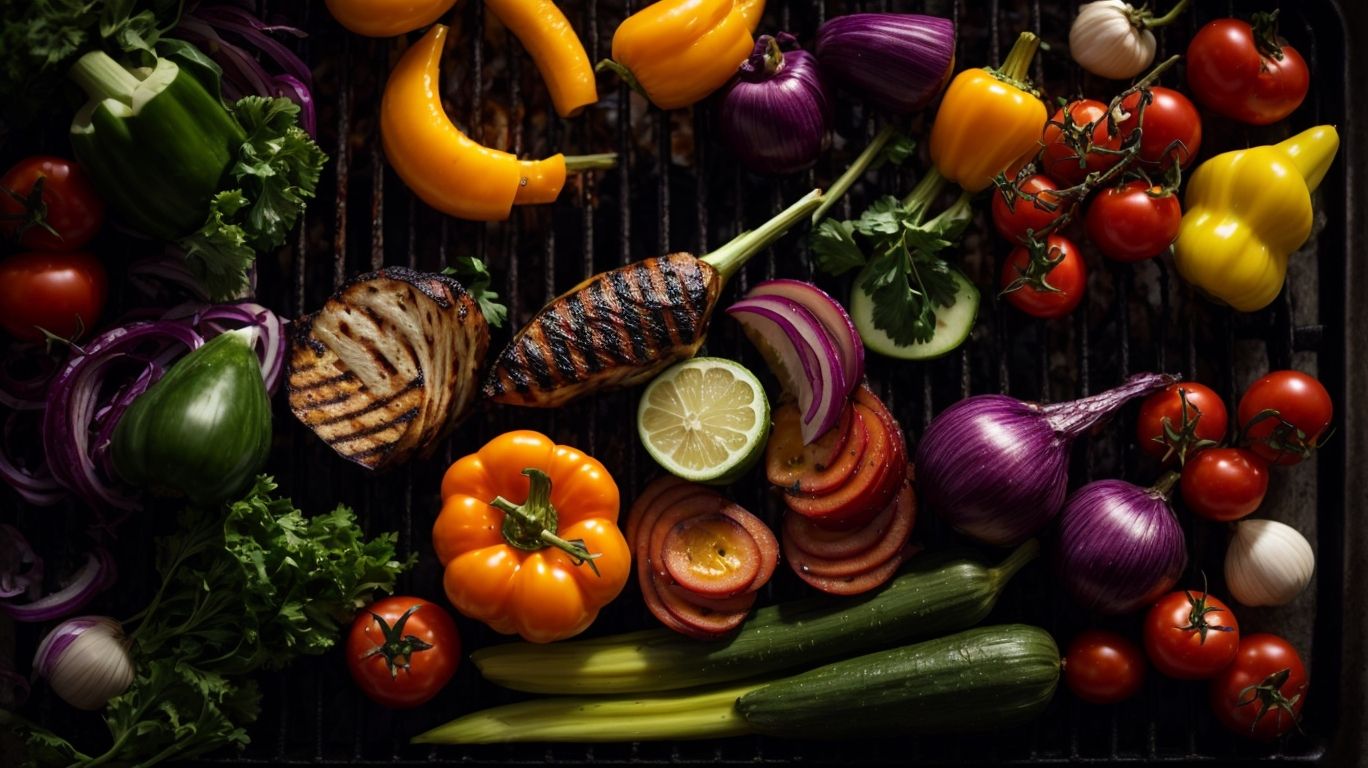
Credits: Poormet.Com – Alexander Ramirez
Mastering the art of grilling vegetables involves following essential instructions, incorporating helpful tips, experimenting with marination, proper rotation, flipping techniques, and exploring diverse serving suggestions for a delightful culinary experience.
Properly marinating vegetables before grilling them can significantly enhance flavor and texture. Marination allows the vegetables to absorb delicious seasonings, oils, and herbs, infusing them with a rich taste profile. It’s advisable to let the vegetables marinate for at least 30 minutes to a few hours for optimal results.
Mastering the art of rotating and flipping the vegetables on the grill ensures even cooking and char marks on all sides, enhancing both visual appeal and flavor. Embrace creativity in serving by incorporating grilled veggies into salads, wraps, or as delicious sides for a well-rounded culinary experience.
Frequently Asked Questions
How to Cook Vegetables on the Grill?
FAQ1: What are the best vegetables to grill?
Any firm and hearty vegetables such as bell peppers, zucchini, eggplant, and mushrooms work well on the grill. Root vegetables like carrots and potatoes also make great options.
How to Cook Vegetables on the Grill?
FAQ2: Do I need to marinate the vegetables before grilling?
It is not necessary to marinate vegetables before grilling, but it can enhance the flavor. You can use a simple marinade of oil, vinegar, and herbs for best results.
How to Cook Vegetables on the Grill?
FAQ3: How do I prevent vegetables from falling through the grill grates?
You can use a grill basket or skewers to keep smaller vegetables from falling through the grates. Alternatively, you can also use a sheet of aluminum foil to create a makeshift tray.
How to Cook Vegetables on the Grill?
FAQ4: What is the best way to season grilled vegetables?
You can use a variety of seasonings such as garlic powder, onion powder, paprika, and herbs like thyme and rosemary. You can also add a sprinkle of salt and black pepper for extra flavor.
How to Cook Vegetables on the Grill?
FAQ5: How long does it take to grill vegetables?
The grilling time for vegetables varies depending on the type and size of the vegetable. On average, it takes about 6-10 minutes to grill most vegetables, turning them occasionally for even cooking.
How to Cook Vegetables on the Grill?
FAQ6: Can I grill frozen vegetables?
Yes, you can grill frozen vegetables, but it may take longer to cook. Make sure to thaw them first before grilling for best results.

